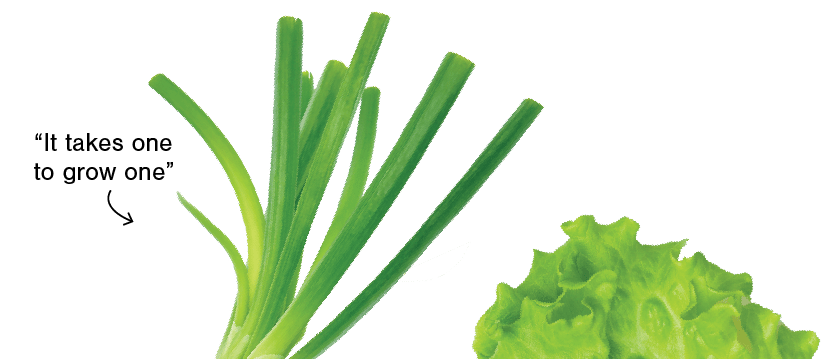

Ah, Thanksgiving: a day for family, friends, football—and a mountain of food! But after the festivities are finished and the leftovers are stowed safely in the fridge (and Uncle Hank is snoring on the sofa), what do you do with a kitchen full of food scraps?
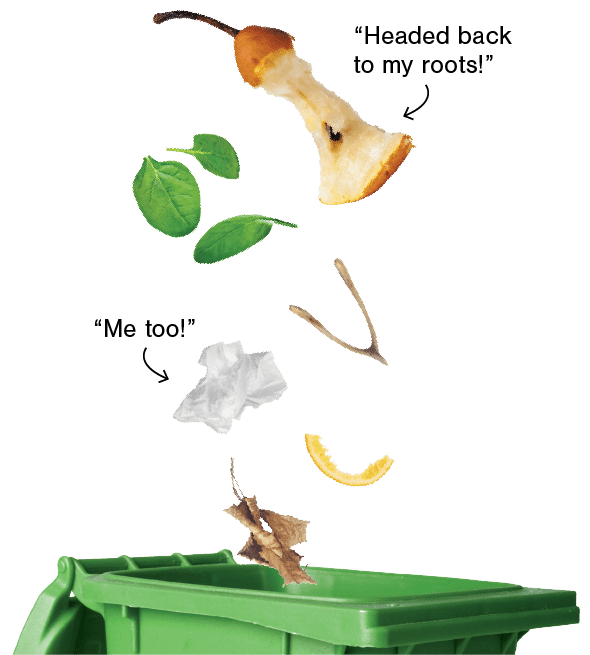
Your trusty green cart is here to help!
Just toss those scraps into your kitchen food scraps container (yes, even those Thanksgiving turkey bones) and empty your pail contents into your green cart. We’ll compost it all and turn it into soil enrichment for local farmers. (We can take bones because we grind them up, unlike in a backyard composting bin—take a look at the back page!)
Taking the time to put food scraps, yard trimmings, pizza boxes, paper napkins and uncoated paper plates into the green cart is an easy way to keep those items out of the landfill.
Did you know that an entire steel can will disappear faster than a pomegranate in a landfill? It’s true! The can will rust and be eaten up before the anaerobic conditions allow plant material to decay. Landfills don’t have the air, water and bacterial activity that organic waste needs to decay quickly.
So, let’s give thanks to our green carts—they turn the food scraps of today into soil for tomorrow! Visit RecycleSmart.org/FoodScraps for more information.
Need an extra pickup of green waste? In addition to your weekly cart service, Republic Services will pick up extra bags up to four times per year, at no charge. Schedule your pickup by calling 925-685-4711 (at least two weeks’ notice, please). Extra green waste must be in paper or BPI-Certified Compostable bags. Visit RecycleSmart.org/Cleanup for more information.
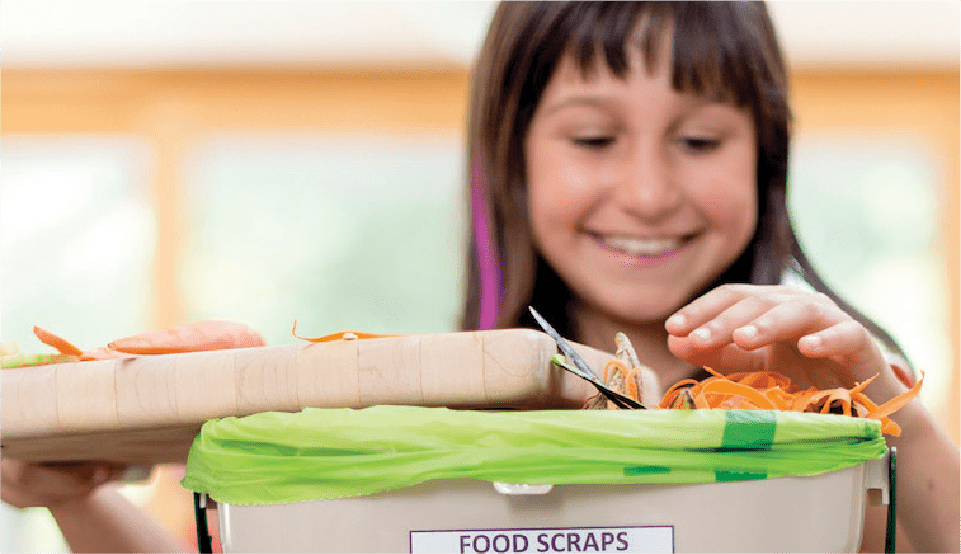
If you’ve been buying organic produce lately, you might notice a pileup of green baggies in your kitchen.
It may seem like a no-brainer to use those bags with your kitchen food scraps container—but hold on! Most produce bags, whether they’re clear or green-colored, are made of polyethylene (PE), a petroleum-based film. PE won’t break down in our compost piles.
Rather than poly-mers, compostable bags are made from a mono-mer called polylactic acid (PLA). PLA is a bio-plastic, made from living materials like corn, potato or other starches. It makes sense that thin films of these materials would break down in a compost pile—like your pumpkin seeds or cranberry sauce, they were alive not so long ago!
You can use paper or go bagless, of course, too. If you want to use a plastic bag, make sure it’s marked “BPI-certified compostable” or “Compostable: BPI—Meets ASTM 6400 Standard.”
BPI-Certified compostable bags are the only “compostable plastics” that are allowed in your green organics cart—cups, utensils and other items are trash. Compostable pet waste bags (and even diapers), like all waste from animals or humans, should only go in the black landfill cart. Visit RecycleSmart.org/FoodScraps to buy compostable bags and for a full list of what goes in—and what stays out of—the green cart.
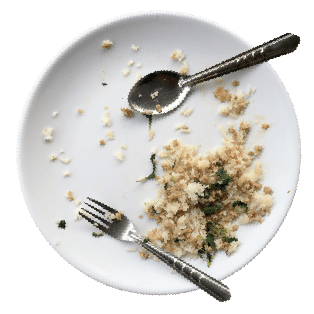
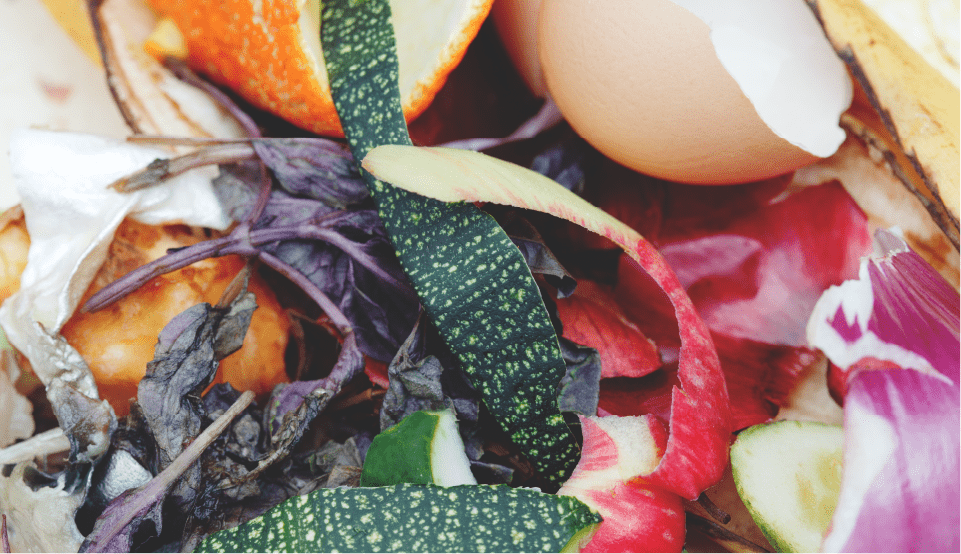
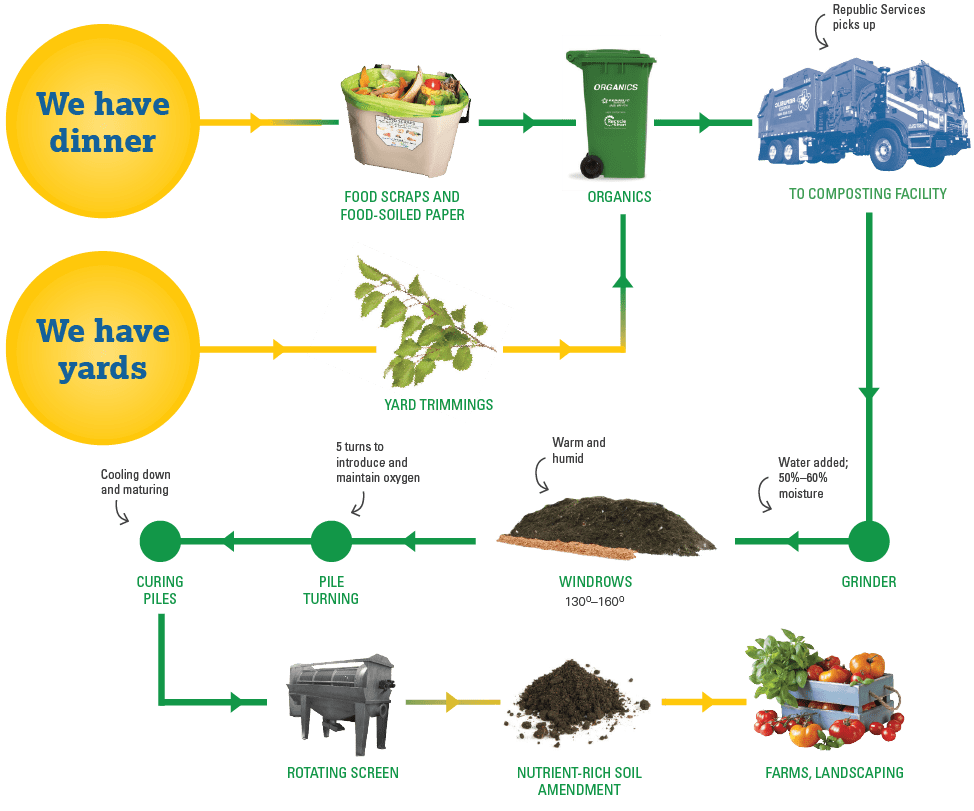
We’ll bring you a kitchen food scraps container to collect your carrot tops as you chop. Just call Republic Services at 925-685-4711 to request a small food scraps container. They’ll deliver one to your service address at no charge. Line it with a compostable bag, paper bag, newspaper or paper towels and fill it with your food scraps, food-soiled paper, flower trimmings, discarded house plant leaves and other green waste ready to become compost!
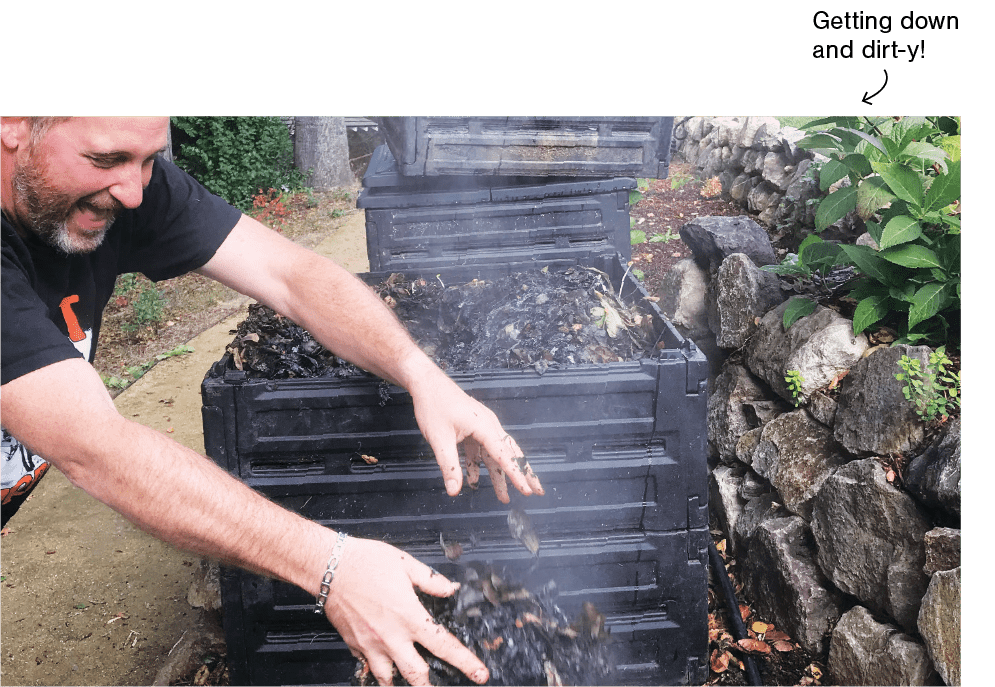
Moraga’s Henry Walker, a lawyer transitioning to a career in horticulture, has been composting for almost a decade. His wife and sons help by separating their food scraps. “It’s not about being perfect, it’s about doing it!” says Walker. “One way or another, you get something good [out of it] and help the environment.”
Here are Walker’s words of wisdom for backyard composting:
Getting Started: Gather up green waste or dry branches, leaves and lawn trimmings, into a pile and chop it all together. When you’re ready to add food scraps, transfer your compost to a bin and cover the area (to avoid unwanted animal intervention!). Pro tip: Find your bin at RecycleSmart.org/CompostBins
Myth Buster: “Outside compost bins shouldn’t smell unless you put the wrong waste in, and there’s always a way to manage the ratio—for every amount of food scraps, add twice that amount in ‘browns,’ like dry leaves.” He recommends avoiding cheese, meat, fish, bones and oils, which can attract rodents. (It’s fine to put them in your green cart.)
Kid Zone: Walker recommends worm composting for a fun activity with kids. “It’s a very clean process!” he promises. Instructions posted at RecycleSmart.org/WormComposting
This is just the tip of the soil pile! There’s more at RecycleSmart.org/Composting
Orinda homes and businesses diverted 71% of their trash from landfills in 2018. Wow!
How’d they do it?
We’re watching for your successes, Central Contra Costa! You’re all recycling more and every bit helps! Keep up the great work.
If you're buying fresh holiday greenery for your home this winter, go naked! Keep those garlands green and say "no thanks" to flocking—the fake "snow" turns wreaths and trees into trash.
A tip from TiM C. in Lafayette
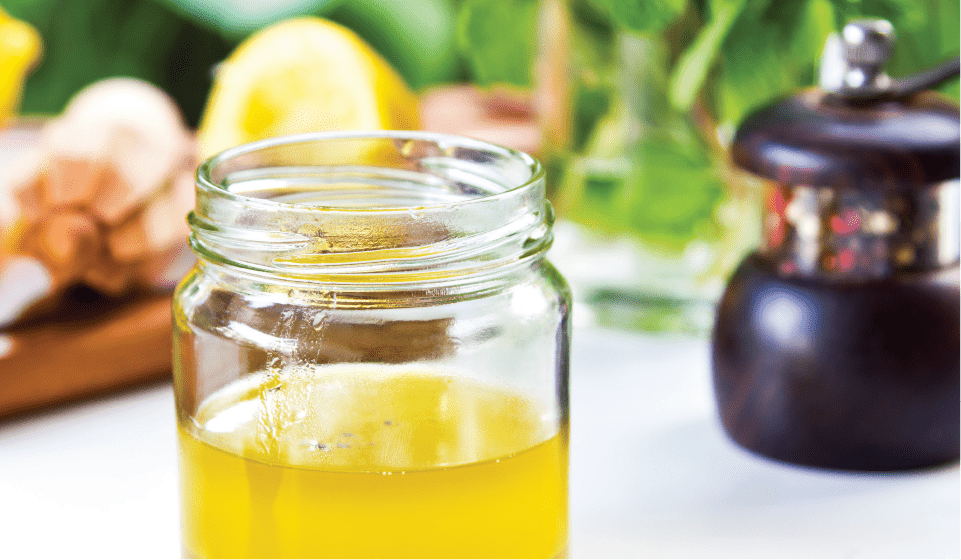
Hi RecycleSmart,
When jars get close to empty, I use what’s left in them to make a sauce or salad dressing. If I take it to a potluck at work or my kids’ school, I don’t have to worry about bringing the container home! I just give the jar a wipe and drop in the recycling bin wherever I am.
Honey Mustard Dressing—the best way to clean out a honey (or mustard) container!
Add the following items to the 2 teaspoons honey left in your jar:
World’s Easiest Ranch Dressing:
Mix well (with a spoon and a good shake) and enjoy!
Send your ideas to Authority@RecycleSmart.org
KID'S CORNER
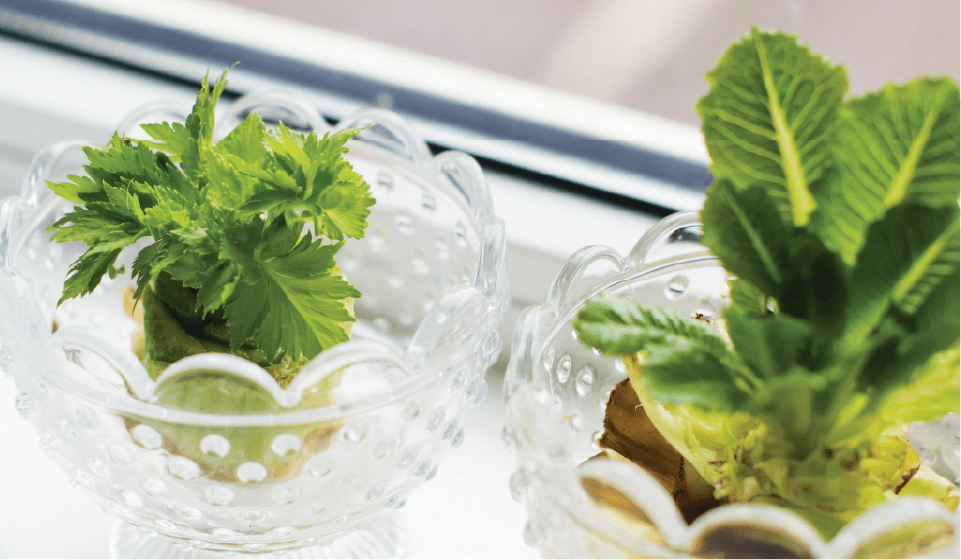
Here’s another way to save food scraps from becoming waste—keep them growing all winter long!
This trick works with lettuce, green onions, leeks, and any other plant with exterior roots that don’t get eaten.
Eat the leaves of your lettuce, leaving about an inch of leaf at the bottom at the lettuce core.
Place remaining core in a shallow dish of clean water, then place dish in a sunny spot on your windowsill or kitchen counter.
Check the water daily to make sure it’s clean and covering the roots. If you need to dump the water and refill, your plant will appreciate it.
Enjoy new leaves as they grow!
